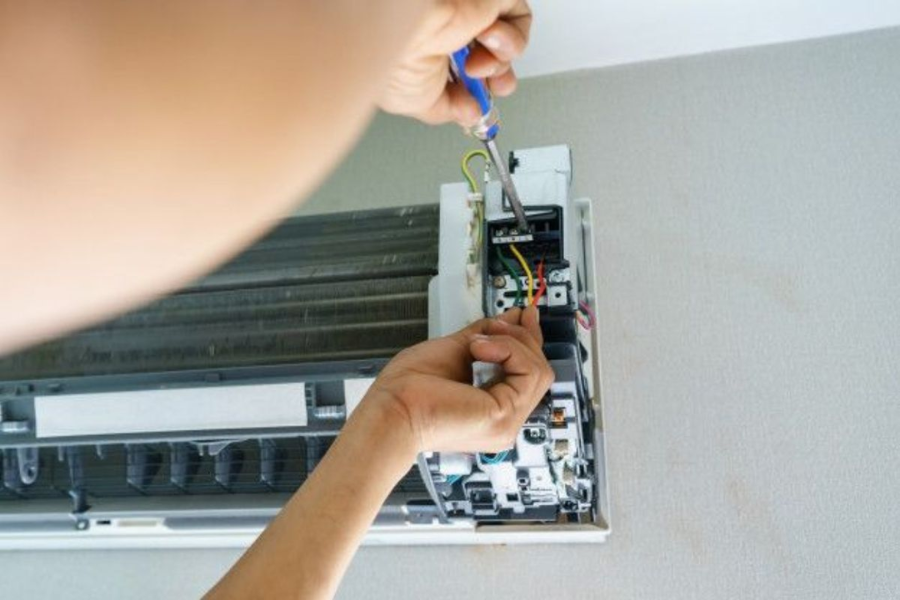Is your YEX382V3YTE air conditioner not performing as expected? Don’t worry! This detailed guide will help you identify common problems and provide step-by-step instructions to restore your unit to its optimal functionality. By following this guide, you can troubleshoot and fix many issues on your own, saving time and potentially costly repair bills.
Common Symptoms Indicating the Need for Repair
Before diving into repairs, it’s essential to recognize the signs that indicate your air conditioner requires attention. Here are some common symptoms:
1. No Cooling
If your unit runs but fails to produce cold air, this is a clear sign that something is wrong. This could be due to issues with the refrigerant, a faulty compressor, or problems with the air filter.
2. Strange Noises
Unusual sounds such as grinding, squealing, or banging during operation often indicate mechanical issues. These noises can stem from loose components or failing parts that require immediate attention.
3. Water Leaks
Puddles forming around the unit can be a sign of water leakage. This could be due to a blocked drain line or a malfunctioning condensate pump.
4. Unpleasant Odors
If you notice musty or burning smells when the air conditioner is running, this could indicate mold growth inside the unit or electrical problems that need urgent inspection.
5. Frequent Cycling
If your air conditioner turns on and off more frequently than usual, this could indicate an issue with the thermostat or an oversized unit that struggles to maintain the desired temperature.
6. Poor Airflow
Weak or reduced air coming from the vents suggests potential issues with the fan or air filter. Restricted airflow can lead to reduced efficiency and increased energy costs.
Tools and Materials Needed
Before you begin the repair process, gather the necessary tools and materials:
Screwdrivers: Both Phillips and flat-head screwdrivers are essential for opening the unit and accessing internal components.
Multimeter: This device is crucial for testing electrical components and ensuring proper voltage levels.
Replacement Parts: Depending on the diagnosis, you may need to purchase specific replacement parts.
Cleaning Supplies: Have vinegar, water, and a soft cloth ready for cleaning tasks.
Safety Precautions
Safety should always be your top priority when working on electrical appliances. Here are some essential precautions:
Disconnect the Power Supply: Always unplug the unit or turn off the circuit breaker before starting any repairs to prevent electrical shock.
Wear Protective Gear: Use gloves and safety goggles to protect yourself from debris and sharp edges.
Follow Manufacturer’s Instructions: Adhere to the guidelines provided in the user manual for safe handling and repairs.
Step-by-Step Repair Instructions
Step 1: Diagnose the Problem
Check the Power Supply
Ensure the Unit is Plugged In: Sometimes, the simplest issues can be overlooked. Make sure your air conditioner is plugged into a functioning power outlet.
Inspect the Circuit Breaker: Check the breaker panel to see if the circuit breaker for the air conditioner has tripped. If it has, reset it.
Use a Multimeter to Check Voltage
Test the Power Outlet: Using a multimeter, ensure that the outlet is delivering the correct voltage to the unit.
Inspect the Thermostat
Verify Temperature Settings: Check the thermostat settings to ensure it is set to a cooler temperature than the current room temperature.
Replace Batteries: If your thermostat is battery-operated, replace the batteries if they are dead.
Step 2: Clean or Replace the Air Filter
Locate the Air Filter
Access the Filter: Open the front panel of the air conditioner to locate the air filter.
Clean the Filter
Remove and Clean: Take out the filter and clean it using a mixture of vinegar and water. Rinse it thoroughly and let it dry completely.
Replace if Necessary: If the filter is damaged or excessively dirty, it’s best to replace it with a new one to ensure optimal airflow.
Step 3: Check for Refrigerant Leaks
Inspect the Refrigerant Lines
Look for Signs of Leakage: Check the refrigerant lines for any signs of oil or refrigerant leaks around the connections.
Test the Refrigerant Levels
Use a Refrigerant Gauge: Check the refrigerant levels using a gauge. If the levels are low, contact a professional technician to recharge the refrigerant.
Step 4: Examine the Condenser and Evaporator Coils
Clean the Coils
Remove Debris: Carefully clean any debris or dirt from the condenser and evaporator coils using a soft brush and coil cleaner to improve efficiency.
Inspect for Damage
Check for Bent Fins: Inspect the coils for bent fins. If you find any, use a fin comb to straighten them to ensure proper airflow.
Step 5: Inspect the Fan and Motor
Check the Fan Blades
Ensure Free Spinning: Make sure the fan blades are unobstructed and can spin freely without any hindrance.
Test the Motor
Listen for Unusual Noises: Pay attention to any strange noises coming from the motor that could indicate a problem.
Check for Continuity: Use a multimeter to test for continuity in the motor. If it fails, it may need replacement.
Step 6: Address Water Leaks
Clear the Drain Line
Check for Blockages: Inspect the drain line for any blockages. Use a vacuum or pipe cleaner to clear any obstructions.
Inspect the Condensate Pump
Functionality Check: Ensure that the condensate pump is working correctly. If it is malfunctioning, replace it to prevent further water leaks.
Conclusion
By following these steps, you can effectively troubleshoot and repair common issues with your YEX382V3YTE air conditioner. Regular maintenance and timely repairs not only extend the lifespan of your unit but also ensure efficient cooling when you need it most. Remember to always prioritize safety and consult a professional for complex repairs or if you’re unsure about any steps. Enjoy a comfortable and cool indoor environment all summer long!
“Explore comprehensive news coverage and insightful articles at TribunExpress.com.”




